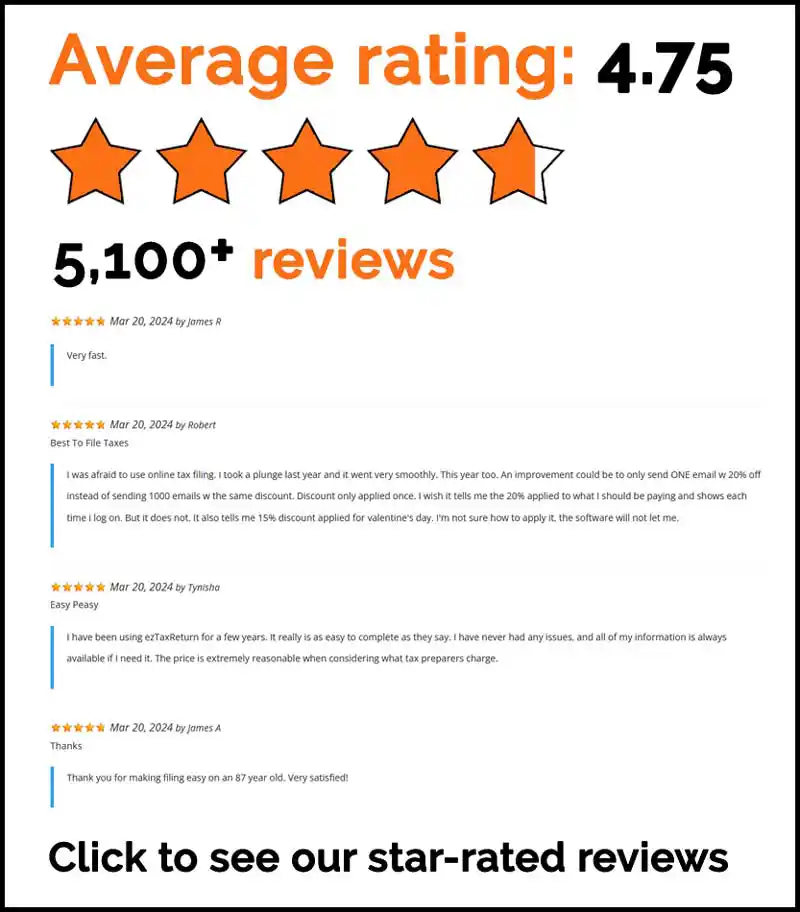The information in this article is up to date for tax year 2024 (returns filed in 2025).
No matter your age, it’s never too soon to start planning for your future. When considering your retirement, whether it’s around the corner or still decades away, it’s important to account for your taxes.
Qualifying distributions from accounts that receive after-tax contributions, such as Roth IRAs and Roth 401(k)s, are generally not taxable in retirement, creating a tax-free income stream.
Your tax liability in retirement will come down to your filing status, total taxable income, and retirement income sources. Below we’ll offer tips and strategies for maximizing your retirement income while minimizing your tax burden in your golden years.
Is Retirement Income Taxable?
Generally, yes. Depending on your situation, the state you live in, and the specific income you earn, most retirement income will be either fully or partially taxable. Taxable income in retirement can come from various sources, including Social Security benefits, pensions, annuities, retirement accounts, and investments.
- Social Security benefits: Depending on your income level and filing status, up to 85% of your Social Security benefits may be taxable. This can significantly impact your overall tax bill.
- Pensions and annuities: These are generally taxed as ordinary income, meaning they are subject to the same tax rates as your wages or salary.
- Retirement accounts: Withdrawals from traditional 401(k) plans, IRAs, and other retirement accounts are also taxed as ordinary income. It’s important to plan your withdrawals strategically to manage your taxable income.
- Investments: Interest, dividends, and capital gains from investments are taxable. The tax rate on these types of income can vary, so it’s essential to understand how your investment income will be taxed.
*Exceptions include Roth IRA and Roth 401(k) distributions, which are tax-free on withdrawal after five years if you’re age 59 1/2.
However, just because retirement income is taxable doesn’t mean there aren’t ways to reduce your tax burden overall.
How Retirement Income is Taxed
Retirement income is subject to federal income tax, and some states also tax retirement income. The tax rate applied to your retirement income depends on your tax filing status, income level, and the type of income you receive.
Federal income tax: Retirement income is taxed as ordinary income, which means it is subject to the federal income tax brackets. These brackets determine the rate at which your income is taxed, and they can change from year to year.
State income tax: While some states do not tax retirement income, others do. It’s important to understand the tax laws in your state to know how your retirement income will be affected.
Net investment income tax: If your modified adjusted gross income exceeds $200,000 for single filers or $250,000 for joint filers, you may be subject to a 3.8% net investment income tax on your investment income. This additional tax can impact your overall tax liability, so it’s important to plan accordingly.
By understanding how retirement income is taxed, you can make informed decisions about your finances and reduce your overall tax burden.
How to Lower Taxable Income in Retirement
Use the following tips to lower your tax liability and minimize your taxable income in retirement:
1. Retire to a State With a Lower Tax Burden
Where you retire can have a big impact on your retirement income and tax burden during retirement. Each state treats income and retirement taxes differently, and several states don’t tax income at all.
Different states impose income taxes on retirement income in various ways, affecting the overall tax burden on retirees. For example, states like South Dakota and Pennsylvania either impose no income taxes at all or have specific exclusions and flat rates.
In some states, retirees may not have to pay tax on Social Security income and certain retirement plan incomes, especially for taxpayers aged 65 and older.
States That Don’t Tax Retirement Income
The following states have no state income tax, which means they don’t tax wages, salaries, dividends, interest, Social Security retirement benefits, retirement distributions, or pension payments:
Alaska
Florida
Nevada
South Dakota
Tennessee
Texas
Washington
Wyoming
In addition to these states, Illinois, Iowa, Mississippi, and Pennsylvania do not tax retirement income. And New Hampshire does not tax wages, salaries, pension payments, or retirement account withdrawals–however, it does tax dividends and interest, which often make up a portion of retirees’ income. If you’re looking for a place to retire, these states may leave you with more money in the bank. It is also important to understand the implications of paying taxes in retirement when choosing a state to retire in.
2. Make Strategic Withdrawals
Your tax rate is based on your annual income. When you retire, you can make strategic withdrawals to limit your taxable income for the year.
Managing retirement funds within various tax-advantaged accounts, such as IRAs and 401(k)s, can help reduce future tax liabilities.
For instance, if you have money in a traditional 401(k), those distributions will be taxed. But if you have retirement investments in traditional and Roth IRA accounts, those distributions may be tax-free. By relying on tax-free distributions for the majority of your income, you can keep your taxable income to a minimum.
Pro Tip: You can convert pretax plans (like your 401(k)) to a Roth IRA and reduce future tax liability. You’ll have to pay taxes on any of the pretax funds you convert, but once they are transferred, those distributions will be tax-free.
3. Take Your Required Minimum Distributions
You can’t leave your retirement investments in your account forever. You must start withdrawing funds from your retirement accounts when you reach age 73. The Required Minimum Distributions (RMDs) are the minimum amounts you must take out.
RMDs apply to traditional IRAs, SEP IRAs, SIMPLE IRAs, and other retirement plan accounts like your 401(k) (with the exception of Roth IRAs). If you fail to take your RMDs, you will be hit with a high penalty (a 50% excise tax on the amount not withdrawn).
You’ll need to file Form 5329, Additional Taxes on Qualified Plans (Including IRAs) and Other Tax-Favored Accounts, with your federal income tax return for the year in which the full amount of the RMD was required but not taken.
You can calculate your yearly RMD through Investor.gov.
4. Take Advantage of Tax Breaks for Retirees
There usually aren’t as many deductions available to retirees, but there are a few you should be aware of:
Planning for federal income taxes is crucial to optimize retirement savings, as different types of retirement income, such as payouts from IRAs and Social Security benefits, may be subjected to federal income tax rates.
Take the Higher Standard Deduction for Seniors
If you’re age 65 or older, the standard deduction is higher. This may impact whether you itemize your deductions or simply take the standard deduction. What you can deduct is based on your filing status.
For the 2024 tax year, the standard deductions for seniors are:
| Filing Status | Standard Deduction |
| Single | $16,550 |
| Head of Household | $23,850 |
| Married Filing Separately | $16,150 |
| Married Filing Jointly or Qualifying Surviving Spouse | $30,750 |
Take the Spousal IRA Deduction
Generally, you must have earned income to contribute to an IRA. But if your spouse still works, they can contribute to both their own IRA account and yours—up to $7,000 per person (for 2024)—if you file a joint return. The couple can contribute a combined total of up to $14,000 per year or $16,000 if both are 50 or older. Those contributions are then deductible from your taxes. This is a great way to reduce your tax bill while putting more money away for retirement.
Deduct Long-Term Care Insurance and Social Security Benefits
Long-term care insurance covers care expenses in places like nursing homes and assisted living facilities. If your plan meets the federal government’s tax-qualified requirements, you can deduct the premiums you pay as medical expenses (if your total qualified medical expenses exceed 10% of your adjusted gross income). Additionally, under qualified plans, the benefits you receive are not typically considered taxable income.
The amount you can deduct is based on age:
| Age | 2024 Tax Year |
| 40 or younger | $470 |
| 41–50 | $880 |
| 51–60 | $1,760 |
| 61–70 | $4,710 |
| 71+ | $5,880 |
5. Are Social Security Benefits Taxable?
Yes, Social Security benefits may be taxable, depending on your income level and filing status. To determine if your Social Security benefits are taxable, you need to calculate your combined income, which includes your adjusted gross income, tax-exempt interest, and half of your Social Security benefits.
If your combined income exceeds $34,000 for single filers or $44,000 for joint filers, up to 85% of your Social Security benefits may be taxable. This means that a portion of your benefits will be included in your taxable income and subject to federal income tax.
It’s important to note that even if your Social Security benefits are taxable, you may not have to pay taxes on the entire amount. The tax rate applied to your Social Security benefits will depend on your tax filing status and income level. Use ezTaxReturn help with the calculations. You’ll get 100% accurate results, guaranteed.
File Your Retirement Taxes with ezTaxReturn
Don’t let taxes rain on your retirement. ezTaxReturn walks you through the tax filing process so you can take advantage of all the savings you’re eligible for. File Today.
The articles and content published on this blog are provided for informational purposes only. The information presented is not intended to be, and should not be taken as, legal, financial, or professional advice. Readers are advised to seek appropriate professional guidance and conduct their own due diligence before making any decisions based on the information provided.




